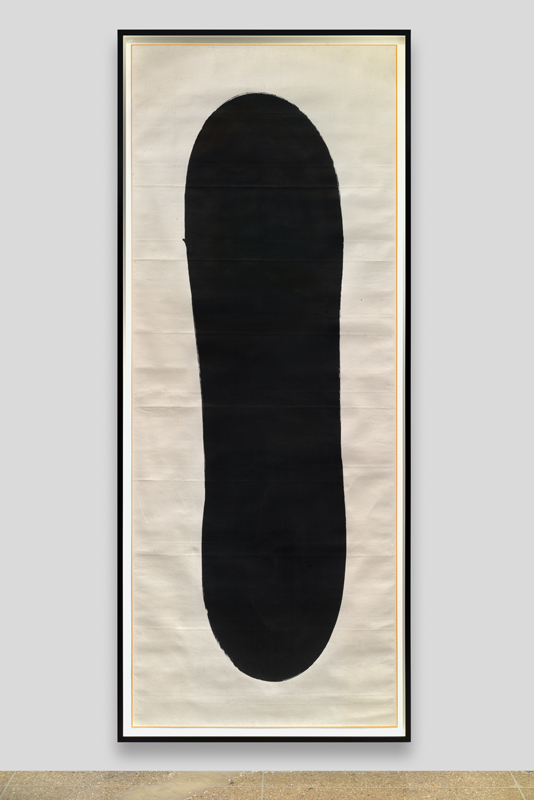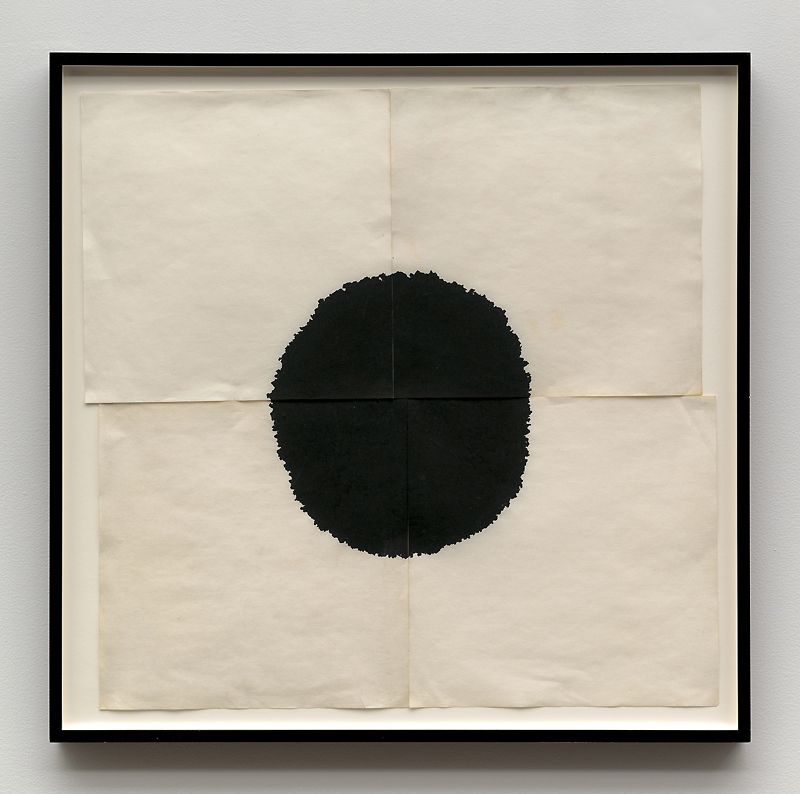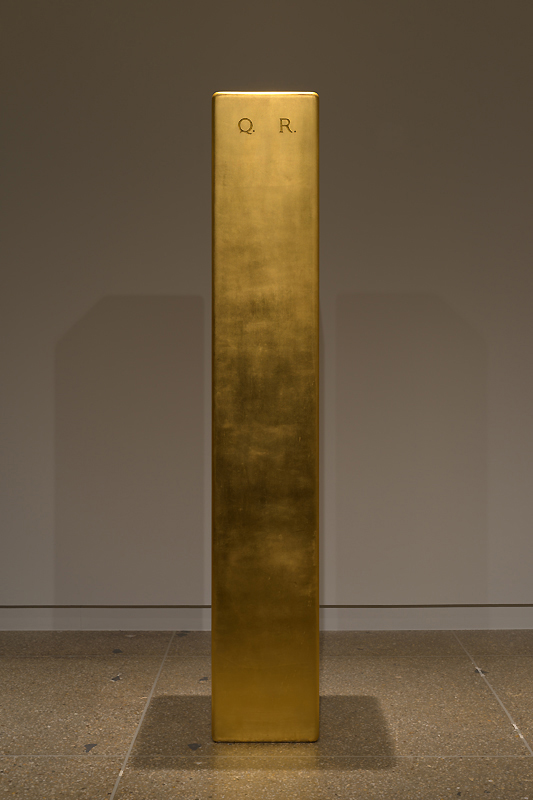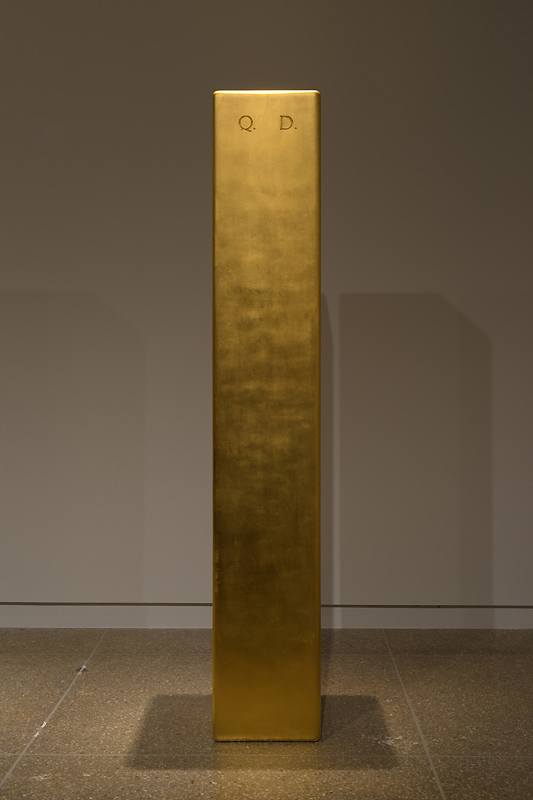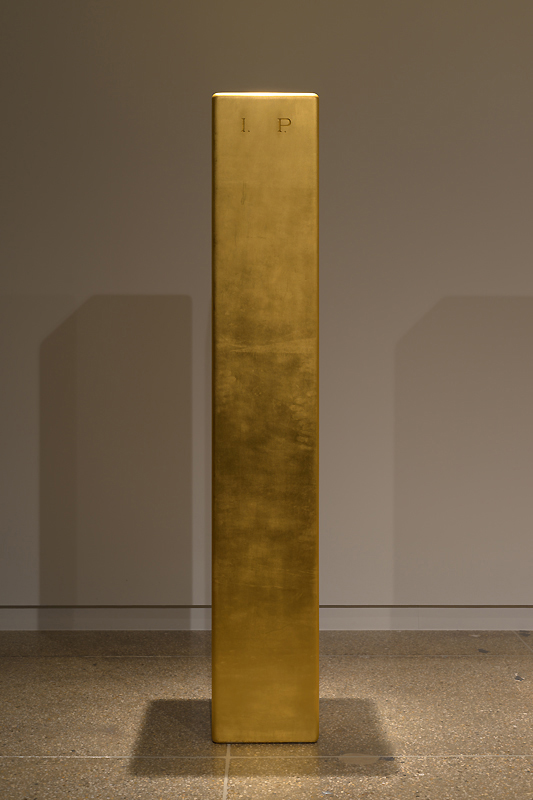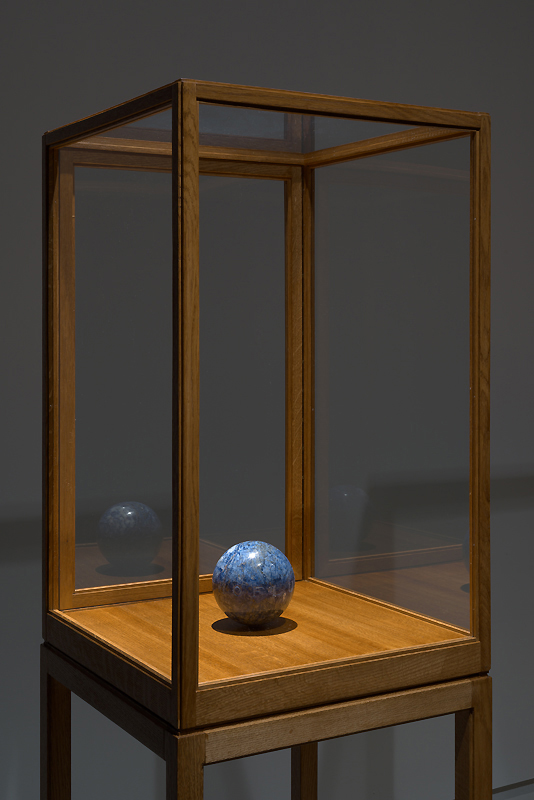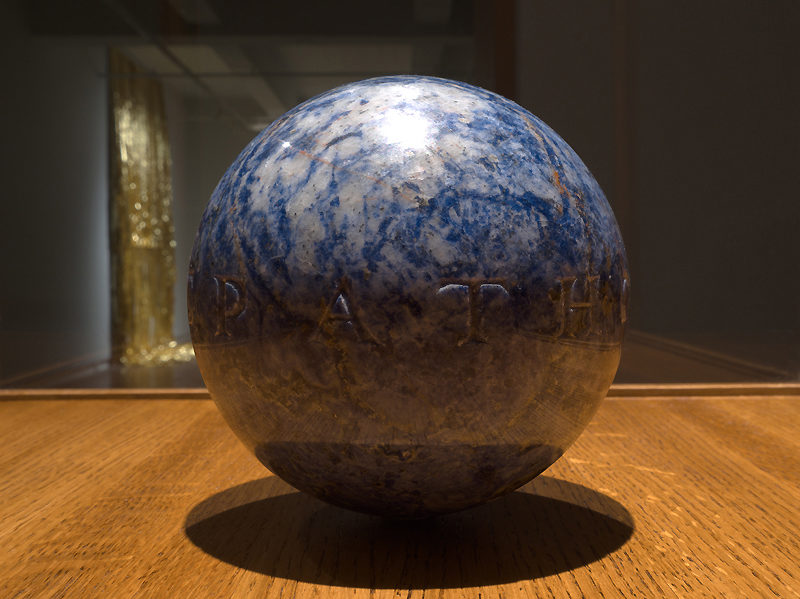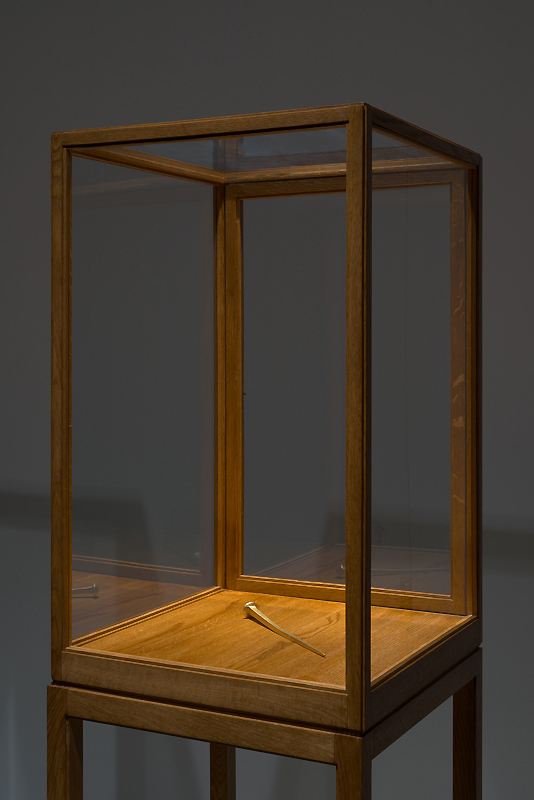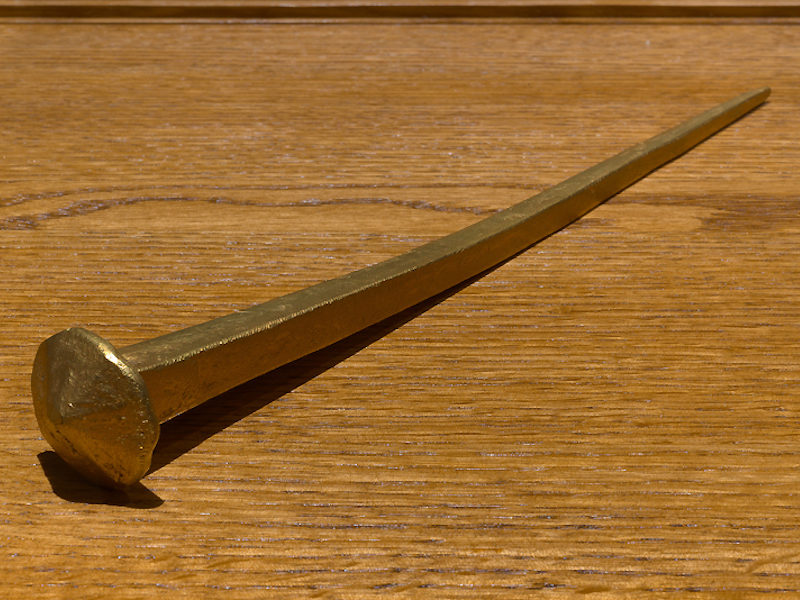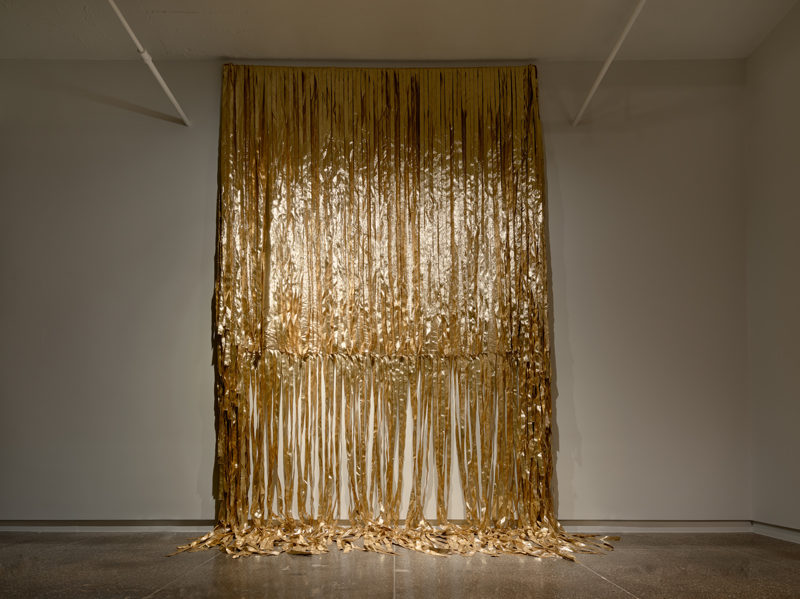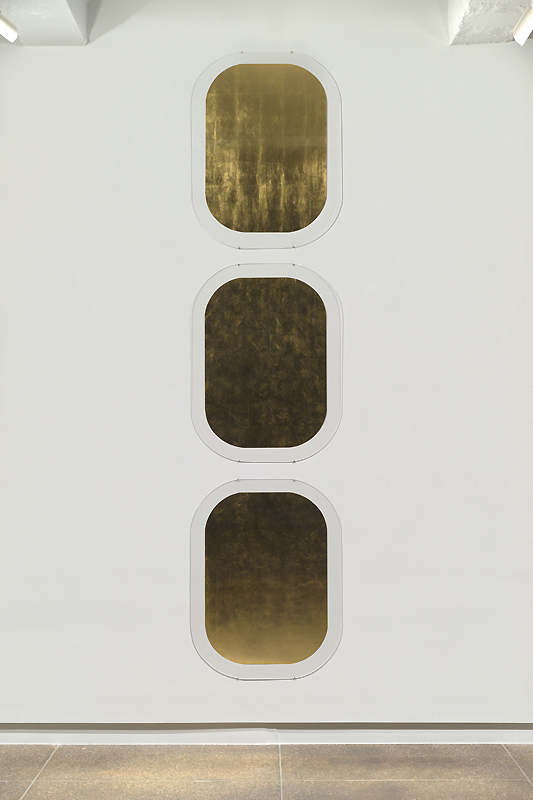James Lee Byars
- The Figure of Question is in the Room
André Viana is pleased to announce The Figure of Question is in the Room, with works by James Lee Byars. This exhibition is produced in collaboration with Michael Werner Gallery, New York.
The exhibition borrows its name from one of the three gilded marble sculptures on view. The Figure of Question is in the Room is displayed by The Figure of the Question of Death and The Figure of the Interrogative Philosophy. Together, these golden totemic pieces illustrate Byars’s life-long obsession with the momentary experience of beauty. Like Joseph Beuys, Byars worked to overcome art’s pure object character in a blending of Minimal and Conceptual practice with performance art “actions.” The three human-sized “figures” manifest Byars’s interest in presenting the human form as a simplified icon, while at the same time symbolizing “question” as an aesthetic belief.
As a conjuror or priest-like figure, Byars often participated in his own exhibitions wearing a hat and black, red or gold suits, discussing the work with visitors or standing motionless as if he were part of living sculpture. In these experiences, Byars not only reworked his role as an artist but also the mise en scène, giving symbolic value to rigorous objects and stressing the inherent beauty of materials, including fabric, stone and especially gold. World Flag (1991), an installation of dripping gold lamé, reveals Byars’s fascination for gold’s reflective and mystical qualities. His sculptures often carry a cult-like feeling, an aspect that is stretched in The Philosophical Nail (1986) by installing the work in a glass and wood cabinet, as is the case with The Path of Luck (1992), a perfectly carved sphere in African blue granite.
Byars was always concerned with “solving the essential questions with questions” as the ultimate provenance of art and the means of attaining perfection. His recurring stays in Japan since the late 1950s, where he studied traditional culture, pottery, and papermaking, as well as Noh Theater and Buddhist philosophy, hint at two untitled works: large, simple, and rounded forms brushed in black ink on Japanese paper. In the end, Byars was perceived as truth-seeking philosopher. He became less concerned with meaning itself than with the production of meaning (by “stating, questioning, commanding, promising”), the work susceptible to multidimensional readings.
It’s been argued that James Lee Byars’s best work may have been himself, but it becomes difficult to distinguish his own persona from his work seeing how successfully Byars stretches his presence into the artwork. Portrait of the Artist (1993), a set of three flat, gold-leafed rectangles with rounded corners is an example of the countless self-portrayals realized throughout his career. This obeys to the artist’s intention of dissolving into his own work, not only figuratively but also in a straightforward way, as in his notable 1994 performance The Death of James Lee Byars: the interior of a gallery is entirely covered in gold and the artist lays down on the floor in a golden suit, merging with the room to the point of invisibility.
James Lee Byars (b. Detroit, 1932; d. Cairo, 1997) was an artist specialized in installation sculpture and in performance art. He studied art and philosophy at Wayne State University in Detroit in the mid fifties. In 1957 he moved to Japan, living mostly in Kyoto where he taught English and studied traditional Japanese culture, pottery, and papermaking, as well as Noh theater and Buddhist philosophy. Since his notorious 1958 exhibition in the stairwell of New York’s MoMA, Byars has been the subject of numerous international gallery and museum exhibitions that established his reputation as early as 1972, when he was included in Documenta V. Over the next two decades he had several solo exhibitions worldwide, including IVAM Centre del Carme, Valencia; Castello di Rivoli/Museo d’Arte Contemporanea, Turin; The Henry Moore Institute, Leeds; Fundaçao de Serralves, Porto; The Arts Club of Chicago; Kestner Gesellschaft, Hannover; and Van Abbemuseum, Eindhoven. More recent solo exhibitions include 1/2 An Autobiography, Museo Jumex, Mexico City and MoMA PS1, New York in 2011; I’m Full of Byars, organized by the Kunstmuseum Bern; The Rest is Silence, curated by Klaus Ottmann, 2006; The Perfect Silence at the Whitney Museum of American Art, 2005; and the retrospective exhibition Life, Love and Death, presented at the Schirn Kunsthalle, Frankfurt and the Musée d’Art Modern et Contemporain de Strasbourg, 2004.
The Figure of Question is in the Room will be on view at our gallery space from 29 September through 23 November, 2016. Gallery hours are Monday through Friday, 11 am to 6 pm.
